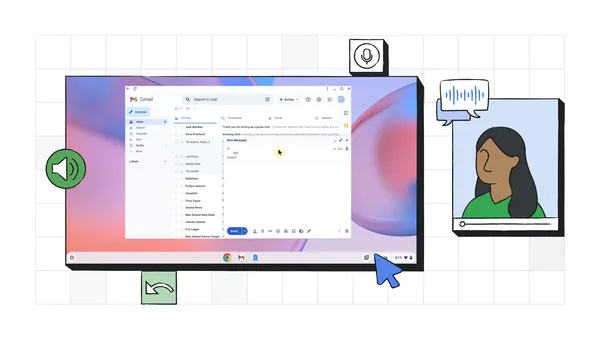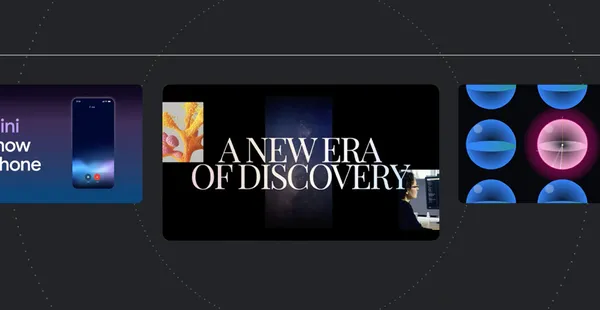 Posted by Prabhat Sharma – Director, Trust and Safety, Play, Android, and Chrome
Posted by Prabhat Sharma – Director, Trust and Safety, Play, Android, and Chrome

At Google Play, we’re committed to providing a safe and secure environment for your business to thrive. That’s why we continually invest in reinforcing user trust, protecting your business, and safeguarding the ecosystem. This includes actively combating bad actors who try to deceive users or spread malware, and giving you tools to combat abuse.
Our tools like the Play Integrity API helps protect your business from revenue loss and enhance user safety. You can use the Play Integrity API to detect suspicious activity and decide how to respond to abuse, such as fraud, bots, cheating, or data theft. In fact, apps that use Play Integrity features have seen 80% less unauthorized usage on average compared to other apps. Today, we’re sharing how we’re enhancing the Play Integrity API for everyone.
Play integrity verdicts are becoming faster, less spoofable, and more privacy-friendly
Starting today, we’re changing the technology that powers the Play Integrity API on all devices running Android 13 (API level 33) and above to make it faster, more reliable, and more private for users. Developers already using Play Integrity API can opt-in to start using the new verdicts today; all API integrations will automatically transition to the new verdicts in May 2025. The improved verdicts will require, and make greater use of, hardware-backed security signals using Android Platform Key Attestation, making it significantly harder and more costly for attackers to bypass. We’ll also be adjusting verdicts when we detect security threats across Android SDK versions, such as when there is evidence of excessive activity or key compromise, without requiring any developer work. And now, Play Integrity API will have the same level of reliability and support across all Android form factors.
The transition to the new verdicts will reduce the device signals that need to be collected and evaluated on Google servers by ~90% and our testing indicates verdict latency can improve by up to ~80%.
You can now check whether a device has a recent security update
Play Integrity API offers enhanced security signals, like the optional “meets-strong-integrity” and “meets-basic-integrity” responses in the device recognition verdict, to help you decide how much you trust the environment your app is running in. Now, we’re updating the “meets-strong-integrity” response to require a security update within the last year on devices running Android 13 and above. This update gives apps with higher security needs, like banking and finance apps, governments, and enterprise apps, more ways to tailor their level of protection for sensitive features, like transferring money. When the strong label isn’t available for the user, we recommend that you have a fallback option. Learn more about our recommended API practices.
We’re also making it easier for you to adjust your app's behavior based on the user’s Android SDK version with a new device attributes field. For example, your app could respond differently to the legacy “meets-strong-integrity” definition on devices running Android 12 and lower than to the enhanced definition on devices running Android 13 and higher. The FAQ includes some example code for using the new device attributes field.
We’re standardizing all optional verdict signals so it’s consistent for you to use
We’re simplifying and standardizing all verdict content across apps, games, SDKs, and more, so that what you see will be more consistent and predictable. For apps installed by Google Play, you can get enhanced verdicts with optional signals such as the improved “meets-strong-integrity” device verdict and the recently launched app access risk verdict (which helps you detect and and respond to apps that can capture the screen or control the device, so you can protect your users from scams or malicious activity). For apps installed out of Google Play and all other API requests, you’ll receive a verdict with information about the device, account license, and app, but without the extra security signals.
Developers can start using the improved verdicts today and they’ll go live for all integrations in May 2025
Starting today, all new integrations will automatically receive the improved verdicts. Developers who already use the Play Integrity API can opt-in to the new verdicts now, or wait until it automatically updates for them in May 2025. For more information, see the Play Integrity API documentation. With these ongoing enhancements, the Play Integrity API is becoming an even more essential tool for safeguarding your apps and users.
How useful did you find this blog post?
★ ★ ★ ★ ★
 YouTube released its annual End Of Year Trends report, which includes four lists across 12 different countries: Trending Topics, Top Creators, Top Songs and Top Songs on…
YouTube released its annual End Of Year Trends report, which includes four lists across 12 different countries: Trending Topics, Top Creators, Top Songs and Top Songs on…
 YouTube released its annual End Of Year Trends report, which includes four lists across 12 different countries: Trending Topics, Top Creators, Top Songs and Top Songs on…
YouTube released its annual End Of Year Trends report, which includes four lists across 12 different countries: Trending Topics, Top Creators, Top Songs and Top Songs on…
 Google Cloud customers can now use Imagen 3 and Veo to create images and videos for their businesses. Starting next week, all Google Cloud customers will be able to acce…
Google Cloud customers can now use Imagen 3 and Veo to create images and videos for their businesses. Starting next week, all Google Cloud customers will be able to acce…




 Face control on Chromebooks uses facial gestures and machine learning to let people with motor impairments control their devices without having to use their hands.
Face control on Chromebooks uses facial gestures and machine learning to let people with motor impairments control their devices without having to use their hands.
 As the Google Career Certificate program reaches 1 million graduates globally, we’re sharing an overview of its impact.
As the Google Career Certificate program reaches 1 million graduates globally, we’re sharing an overview of its impact.
 From a powerful new AI-flood forecasting initiative to help from AI in advancing quantum computers.
From a powerful new AI-flood forecasting initiative to help from AI in advancing quantum computers.
 Posted by Prabhat Sharma – Director, Trust and Safety, Play, Android, and Chrome
Posted by Prabhat Sharma – Director, Trust and Safety, Play, Android, and Chrome

